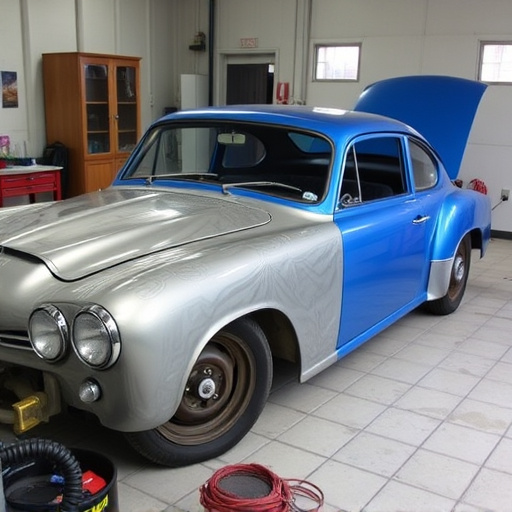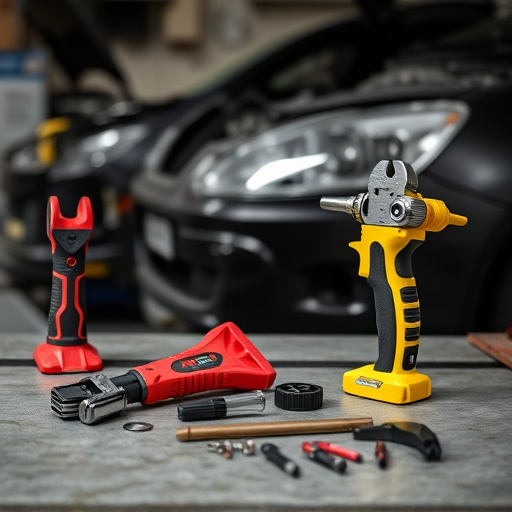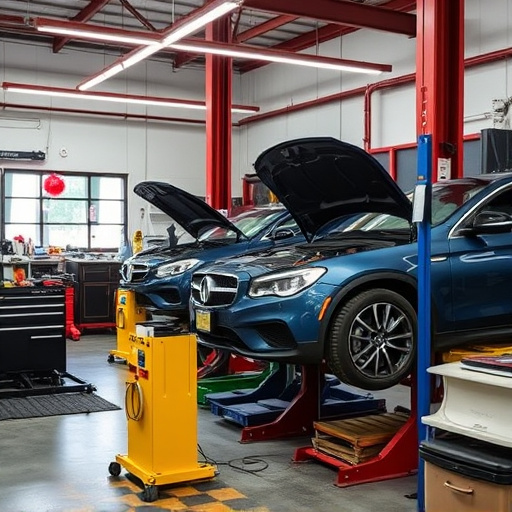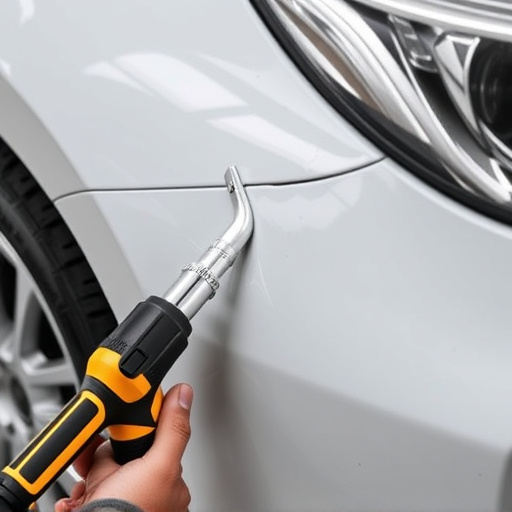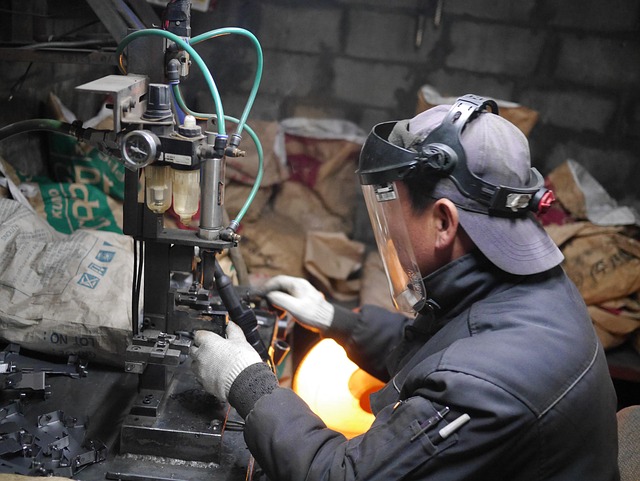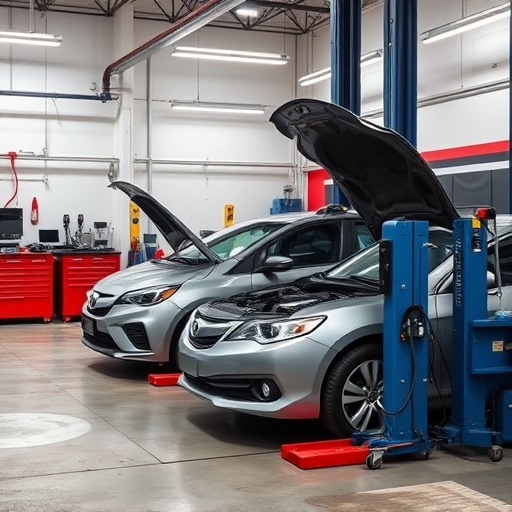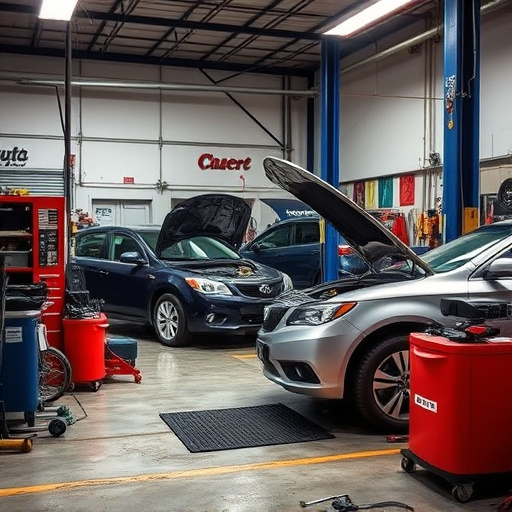Carbon fiber repair poses unique challenges due to its complex structure. Top auto collision centers train technicians in specialized methods to minimize further damage. The right approach—autoclave-assisted, hand layup, or advanced composites—ensures structural performance and aesthetic harmony. Professional services use specific tools, materials, and a meticulous process for precise repairs, from damage assessment to final paint correction, maintaining the vehicle's integrity and original appearance.
“Uncover the essential elements of carbon fiber repair, a crucial skill for addressing the unique challenges posed by this advanced material. This comprehensive guide delves into the heart of carbon fiber damage and its distinctive repair requirements. From understanding the intricacies of common issues to equipping yourself with the right tools and materials, you’ll learn the steps needed for successful restoration. By mastering these key carbon fiber repair methods, you’ll be prepared to tackle damages effectively.”
- Understanding Carbon Fiber Damage and Its Unique Repair Challenges
- Essential Tools and Materials for Effective Carbon Fiber Repairs
- Step-by-Step Guide to Achieving Successful Carbon Fiber Restoration
Understanding Carbon Fiber Damage and Its Unique Repair Challenges

Carbon fiber damage presents distinct challenges compared to traditional materials due to its unique structure and composition. Unlike conventional auto collision repair involving metal or plastic, carbon fiber repairs demand specialized knowledge and techniques. Cracks, delaminations, and fiber separation are common issues, requiring precise identification of the damaged area. The intricate nature of carbon fiber composites means that even small mistakes can compromise structural integrity.
In an auto collision center or body shop offering top-tier services, technicians undergo extensive training in carbon fiber repair methods. This specialized training ensures they can navigate the complex repairs effectively, minimizing the risk of further damage. Understanding these challenges is crucial for choosing the right carbon fiber repair approaches, whether it’s autoclave-assisted repair, hand layup, or advanced composite technologies, ensuring that the vehicle not only looks like new but also maintains its structural performance.
Essential Tools and Materials for Effective Carbon Fiber Repairs

When it comes to carbon fiber repair methods, having the right tools and materials is paramount for achieving a professional and durable outcome. Essential items include specialized adhesives designed for carbon fiber, as well as precision tools such as cutting knives, sandpaper with various grits (from coarse to fine), and brushes for cleaning and preparation. Additionally, a respirator mask is crucial due to the material’s microscopic fibers that can be hazardous when inhaled.
For effective repairs, consider high-quality body shop services that offer auto detailing expertise. Professionals in this field have access to advanced tools not readily available to amateurs, ensuring precise measurements and seamless integration of the repaired area with the rest of the vehicle. This is particularly important for complex carbon fiber components, where even a slight imperfection can be noticeable. Remember, proper preparation and using suitable materials are key to successful carbon fiber repair, whether for car dent repair or more intricate auto detailing tasks.
Step-by-Step Guide to Achieving Successful Carbon Fiber Restoration
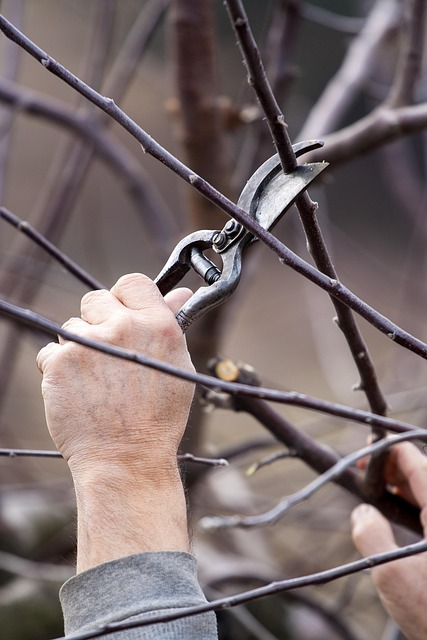
Restoring a carbon fiber vehicle to its former glory involves a meticulous process that requires precision and expertise. Here’s a step-by-step guide for achieving successful carbon fiber restoration, focusing on key elements of carbon fiber repair methods.
1. Assess the Damage: Begin by thoroughly inspecting the damaged area. Identify cracks, chips, or delaminations in the carbon fiber composite. This initial evaluation guides the repair process and determines the extent of necessary repairs, similar to how a doctor diagnoses an injury before treatment.
2. Prepare the Surface: Clean the damaged zone with specialized solvents to remove grease, dust, and other contaminants. Sanding may follow to create a smooth base, ensuring proper adhesion for the repair materials. This preparation stage is crucial, much like getting ready for surgery, as it ensures the strength and longevity of the repair.
3. Choose the Right Materials: Carbon fiber repair methods demand specific products tailored to composite materials. Select carbon fiber patches, resins, and hardeners compatible with the existing structure. For severe cases, a frame straightening technique might be required to realign components accurately.
4. Repair and Reinforce: Apply the chosen resin using a brush or roller, ensuring complete coverage of the repair area. Place the carbon fiber patch over the damaged zone and secure it temporarily. Allow the resin to cure as per manufacturer instructions for optimal strength, comparable to how specific proteins facilitate healing in medicine.
5. Smooth and Blend: Once cured, meticulously smoothen the surface to match the surrounding composite. Use finer sands to achieve a seamless blend, ensuring no visible repair traces remain. This blending stage is akin to an artist refining their masterpiece, aiming for perfect harmony.
6. Apply Final Coat: After achieving a flawless finish, apply a high-quality vehicle paint repair to protect and enhance the restored area. Match the color precisely to ensure invisibility under various lighting conditions, just as artists match colors on their palettes.
Carbon fiber repair methods are crucial for restoring damaged composite materials, ensuring structural integrity and aesthetic appeal. By understanding the specific challenges of carbon fiber damage and employing the right tools and techniques, you can achieve successful restoration. Following a systematic approach, as outlined in this guide, allows for precise repairs that match the strength and durability of the original material, making it an indispensable skill for professionals in various industries.
